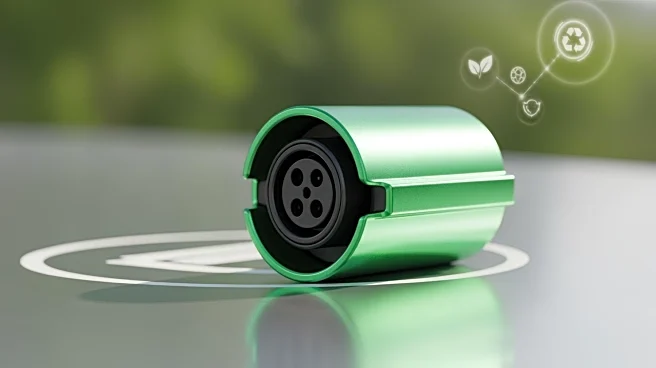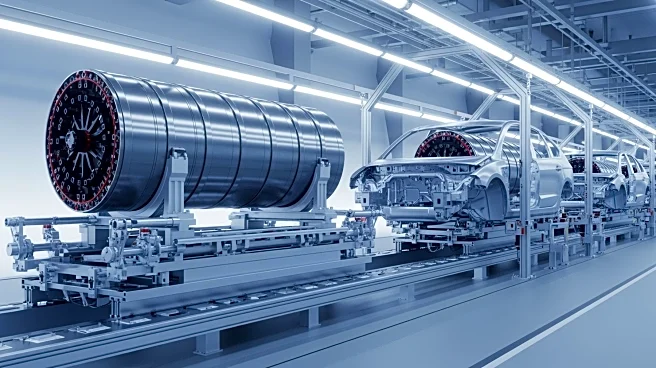What's Happening?
A study by Transport & Environment (T&E) suggests that switching to green aluminium could significantly reduce the carbon footprint of electric vehicles (EVs). Green aluminium, produced using recycled
materials or electrified heating, could save as much CO2 annually as removing 900,000 fossil fuel cars from the road. The study proposes content targets for green aluminium in new cars, aiming for 60% by 2035 and 85% by 2040. This transition could add as little as €25 to the price of a car by 2040, positioning Europe as a leader in clean tech due to its cleaner electricity grid.
Why It's Important?
The adoption of green aluminium in EV production represents a significant opportunity to enhance sustainability in the automotive industry. As tailpipe emissions decrease, the focus on production emissions becomes crucial. Green aluminium offers a pathway to reduce these emissions, supporting climate goals and promoting cleaner technologies. Europe's competitive advantage in green aluminium production could bolster its position in the global clean tech market. The initiative aligns with broader efforts to reduce dependency on imported aluminium and promote local production, contributing to economic and environmental benefits.
What's Next?
The EU Commission is expected to publish its Industrial Accelerator Act, which may include green aluminium content targets for carmakers. These targets could drive the adoption of green aluminium and support the development of a sustainable automotive industry. The Commission may also propose aluminium recycling targets as part of the Circular Economy Act. These measures could encourage the use of locally sourced materials and limit exports of scrap aluminium, fostering a circular economy. The automotive sector's transition to green aluminium could set a precedent for other industries seeking to reduce their environmental impact.












